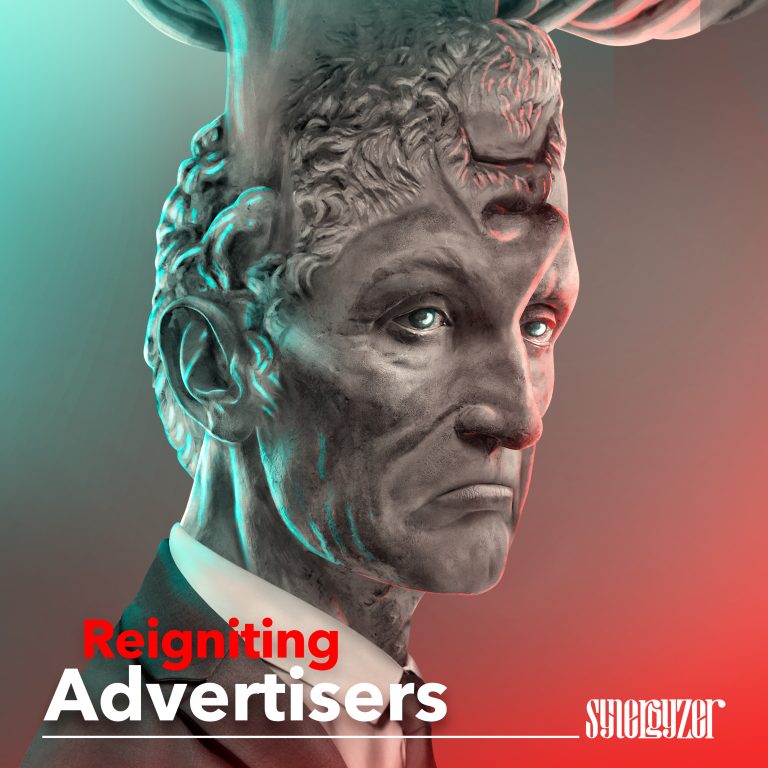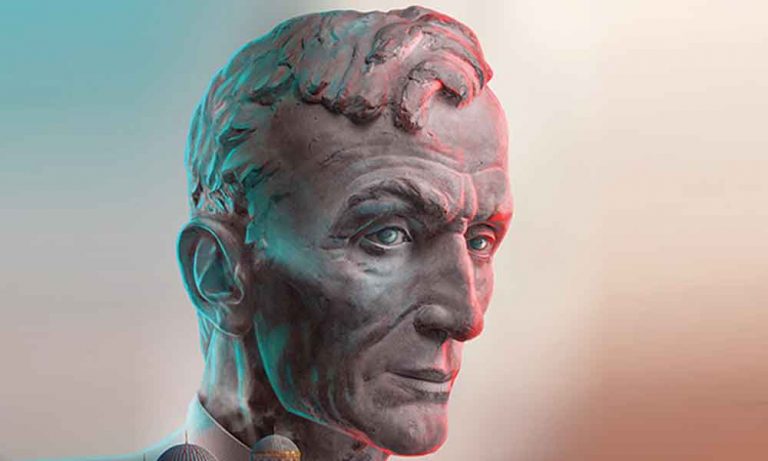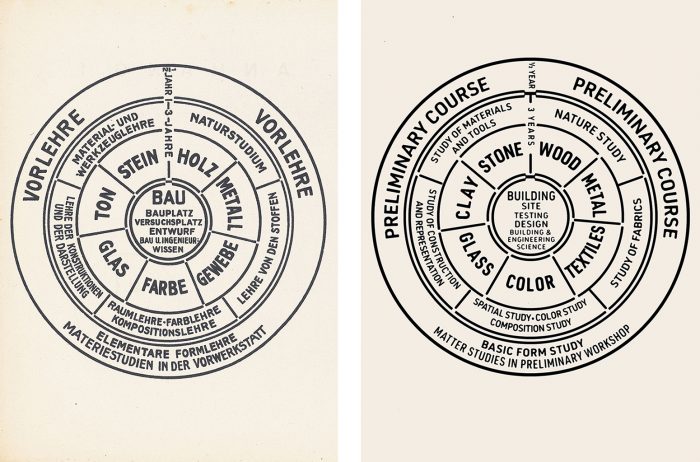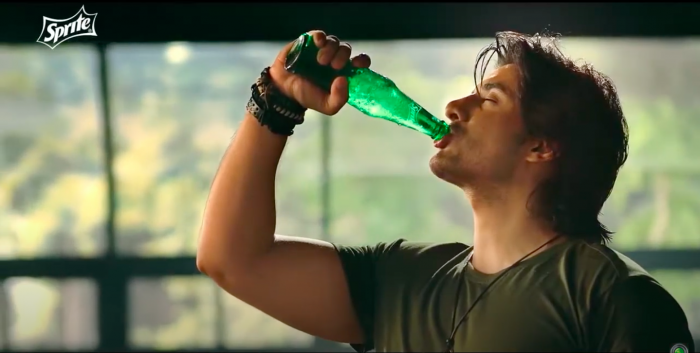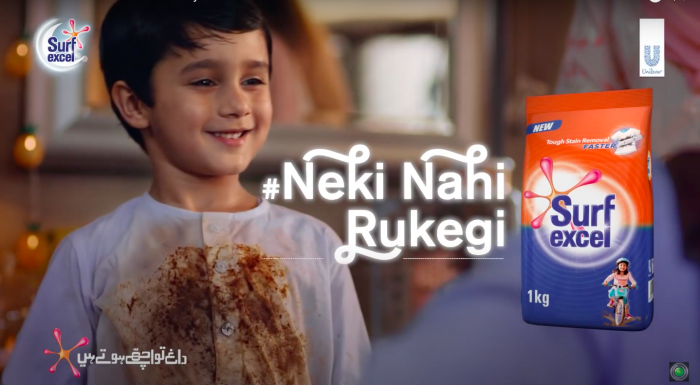SYNERGYZER: When did you join State Life Insurance Corporation Pakistan? Walk us through your professional journey.
SHOAIB JAVED HUSSAIN: I joined State Life a year and a half ago, in March 2021 precisely, as the Chairman and CEO. I was in Hong Kong for 3.5 years working as a Global Director, Risk, and Strategy for the largest pan-Asian insurance group, AIA Group Limited. I also worked with Milliman, an American strategy and management consultancy. Before that, I was in London for thirteen years where I completed my further education and qualified as an actuary. I worked for HSBC, Ernst & Young, and Prudential, where I took on different roles from advisory to strategy management.
SYNERGYZER: After having spent so many years abroad, what brought you back to Pakistan?
SHOAIB JAVED HUSSAIN: I am from Pakistan. I was born in Quetta and soon afterward, my parents moved to Karachi where I finished my schooling as well as A’Levels from Karachi Grammar School.
My journey abroad has been fantastic; I got to learn a lot and also made some great friends, but at the end of the day, your root is your home country. I believe that there’s no greater reward than coming back to the country you call home with your own area of expertise, and professionalism and knowing that you can contribute towards the growth of the country in whatever capacity you can – it’s something that brings me immense pleasure! It is effectively the Japanese concept of Ikigai “your ‘reason for being.”
SYNERGYZER: How would you say the international exposure has shaped your career?
SHOAIB JAVED HUSSAIN: Since I left the country at a relatively young age, my experience abroad taught me a lot, from the professional ropes to personal experience, it has shaped me as a person and as a professional. Especially in the context of the last 20 years, a lot has been happening geo-politically and geo-economically; the concepts of globalization is changing. Working in London, the financial capital of the world, while the economies were changing drastically, not only did I get to work with best of the seat but I also learnt the value of different cultures and perspectives and to adopt and grow in a constantly evolving leadership, never losing sight of my culture and heritage. It is important to live one’s own identity; so when we talk about diversity and inclusiveness, I have experiences that range across the spectrum, because when you are working as a minority, you are working harder to prove yourself and be included.
Now that I am here in Pakistan, my focus is to ensure inclusivity, to give confidence to every individual to bring their own set of skills to the task and celebrate the value of diversity of perspectives. For any organization to thrive I think it’s very important that we identify and value these skill sets to use them in the right place and explore their true potential. Only then can we draft narratives, solutions and identify the needs of the people we are here to serve.
SYNERGYZER: How do you think has Pakistan’s insurance sector changed over the last two decades, and what is it that has remained unchanged?
SHOAIB JAVED HUSSAIN: Pakistan has one of the smallest insurance markets; it has a very low insurance penetration rate, which is the amount of annual premiums over gross domestic product. Currently, the world average is around 3.5%; India stands at about 4.5%, while countries like Malaysia and Indonesia would be above 3.5%. Pakistan currently sits at 0.9% and I see no reason other than the limited innovation.
State Life’s current market share stands at 60%, it was at 50% when I joined. So the growth we’ve achieved over the year proves that the entire market has the potential to grow. The insurance sector as a whole holds its forte in selling saving products, but what I feel is missing is the innovative aspect to meet the protection and social welfare needs. This applies to both private and public players in the market. Given the current population of 220 million, it is high time that we realize how a one-fits-all policy does not apply to such a vast population – different people are going through different stages of their lives and need different solutions for financial inclusiveness and protection needs. I believe the innovation in products has not been promoted as enthusiastically as it should have been and that is what, SLIC has been primarily working towards ever since I have taken charge.
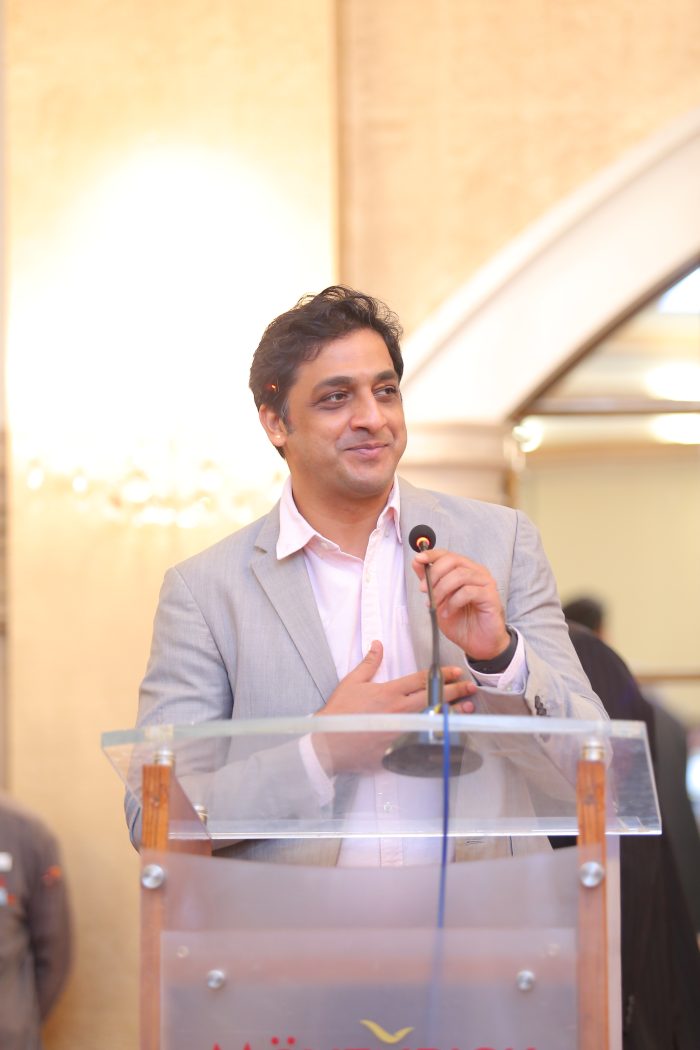
SYNERGYZER: Keeping this penetration rate in mind, why is there still scepticism about insurance among customers?
SHOAIB JAVED HUSSAIN: When you enter the insurance industry, you are taught that insurance is not bought, but it is rather sold. Going in with that frame of mind, what I see is that some companies are only looking at high net-worth segments of the market; making savings or investment products for them, whereas the real purpose of insurance is savings and protection.
Unfortunately, in Pakistan, during the past ten years or so, there has been a practice of selling insurance as an investment product which means when stock markets are volatile, the returns may not be as much as what people expect and that is when trust in the industry goes away. What is insurance primarily? It is a promise to the individual that when the need arises, the insurance company will be there to meet that need. When that promise is broken, so is the trust. I think the industry, as a whole, has to work very hard to bring that trust factor back and we are doing that with a line of new products which focus on protection and individual needs. These products are made with different age groups and financial segments in mind so that we can offer solutions that assist them in their life journeys.
SYNERGYZER: Your leadership vision and drive has brought significant growth to SLIC. At the same time, you have highlighted the need for innovation. What are the innovative changes you have brought to the organization since you joined it in 2021?
SHOAIB JAVED HUSSAIN: With innovation, our focus has been on products, digitalization and increasing accessibility. With product innovation, we were the first in Pakistan to launch rider protection plan. In today’s gig economy there are many platforms that provide rider and courier services and their riders are the frontline workers. We have innovative digital product that protects these riders, providing cover for life, accident, disability and hospitalization.
We have also launched our individual and corporate health product line; where the focus has been to ensure affordability for the masses. As per our benchmarks, our products are 40% cheaper than anything else that is available in the market for the same service and protection.
Speaking of health protection; Pinktober is marked to create awareness against breast cancer, it’s one thing to create awareness but we also need solutions to support women and the only way you can fight cancer is by preventing it. We have created Sinf-e-Ahan, Pakistan’s first women specific cancer protection plan that protects near all types of cancers that may afflict a woman. The design of the product is purposefully simple where we pay-out straightaway on diagnosis and again the focus has been affordability; the cover can be taken for as little as Rs 200 a year.
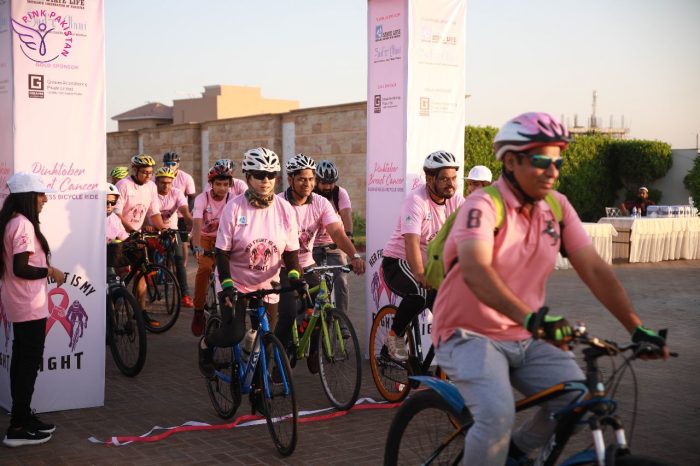
We have launched a ‘haari’ protection plan for our farmers in the rural society and soon a domestic help protection line too. We are a young nation, and there are a lot of good things happening in the freelancing and tech industry but there aren’t any financially inclusive products for them, so we are focusing on these.
Moreover, we re-launched some of our best saving products under ‘golden endowment’ since we are celebrating 50 years of State Life this year. We have technically reviewed the policy, the product and refined it, which means that the new product gives you an automatic 25% value addition from day one. It is not only protection but also generates savings growth with guaranteed bonuses each year.
Similarly, SLIC’s pension savings plan is one of the best values in the market where on average your initial investment doubles in seven years.
On digitalization, we have also launched our digital product line which brings health and protection solutions in the palm of your hand. Digital premium payment solutions are available to policyholders now.
Our health line, has evolved to e-claims and e-processing providing cashless solutions. In July this year we launched ‘state-of-the-art’ data centre in Islamabad. So together, with continuously improving and digitizing our policyholder services, we are also focused on making our internal processes more efficient and paperless.
We have focused on improving accessibility to our policyholders. I myself hold e-kacheris on a monthly basis, where anyone engaged with SLIC can call in or connect via zoom and we look resolve any issues at the earliest.
We are also focused on improves sales accessibility. Our agency force is the largest in Pakistan with nearly a hundred thousand agents and more than 11,000 area offices across the country. We have some excellent banking partners and are also bringing on corporate agents as well as digital sales points.
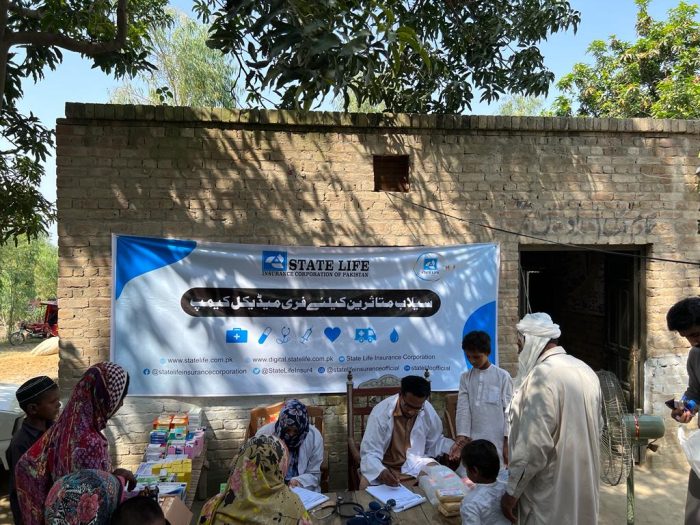
SYNERGYZER: Moving forward with your digitalization plan, what role does it play when it comes to the insurance sector and where does SLIC stand currently as compared to its competitors in terms of digitization?
SHOAIB JAVED HUSSAIN: Generally speaking, across the globe, the insurance industry is always a step behind when it comes to digitization and adopting technology. However, I think there are some good initiatives taken along with directional push being brought in on digitization in what you call ‘Insurtech’ from the SECP and companies are innovating. However, what you usually find in a financial world is that the front face, for example, a digital app etc., may be available to a policyholder or a customer but the back end is still very manual. So, for me, when you talk about digitalizing, I am not only talking about the front face but I am talking about the entire journey and I think that journey still has to be undertaken in leaps and bounds as far as Pakistan is concerned.
SYNERGYZER: The growth and turnaround State Life has witnessed under your leadership has been phenomenal. Despite the ongoing pandemic, State Life paid Rs 100 billion in claims, registered 100% business growth and your market share increased. What are some of the factors that led to this?
SHOAIB JAVED HUSSAIN: 2021 was a record-setting year for State Life and we are very proud to be a part of it, despite the pandemic and other economic challenges. State Life increased new business year on year by 100%. We paid Rs 100 billion in claims which is the first ever in Pakistan. I earlier mentioned our endowment product where we pay guaranteed bonuses each year. In 2021 alone, we allocated about Rs 85 billion in bonuses to policyholders. The fantastic thing about State Life is that it’s the only company, which allocates 97.5% of its profits to its policyholders. So, whatever we earn, effectively goes straight back to the policyholders. When we talk about the best returns and the best protection, State Life naturally gives that. As for the other factors, I inherited a team of people who are very loyal and very dedicated to State Life and when the challenges were put up to them, they worked really hard to surpass them. From our actuarial divisions to our policyholder services to our marketing division and the field force, I think they all did a fantastic job.
The main goal that I’ve had since I’ve been here is to really generate and increase the penetration rate in Pakistan and the acceptance of insurance, and the reason for that is that a larger and more dynamic insurance industry will contribute a lot more to the economy of Pakistan and towards the social protection of Pakistanis. A vibrant insurance industry has the potential of becoming the backbone of an economy because its focus remains on long-term savings and protection and when individuals feel that they are protected, they are much more likely to take entrepreneurial risks to fulfill the dreams that otherwise they may not have the means to, and that’s why we are here: to back them up and protect them. We are the market leaders, however, I feel currently, there should be no competition within the insurance industry given how small it is on whole and its potential for growth. SLIC’s focus is really to lead by example and show that there is a much bigger service to roll out to all of Pakistan and I am very happy to say that yes, we have been successful in the past year or so and hopefully will continue being so.
SYNERGYZER: What was the objective behind the revival of your historic Aye Khuda Mere Abbu Salamat Rahen ad campaign this time addressing the mothers and dharti?
SHOAIB JAVED HUSSAIN: Following all the hard work we had put in including coming up with new products, starting the digital journey, reviving different sales channels, etc. it was important to get the message across. So, we sat down with a number of media companies and got a whole diaspora of pitches, from something very flashy on how to connect with the new generation to something being a bit more archaic, given we are an old company. All had their pros and cons but the one thing that kept coming up was the jingle, ‘Aye Khuda Mere Abbu’ which everybody still remembers; it’s a fond memory in everyone’s mind. Since we had our 50th anniversary coming up, and there was a realization that it is a legacy to be celebrated. Also, Pakistan has also changed since that jingle first came about. A father is not the only sole bread earner of a family anymore, a mother has an equally important role. She had an important role back then too but more so even now. No matter what they may be doing, they may be homemakers, leading their own lives together with the father being bread earners, or single mothers or single fathers, understanding and respecting those different roles was important.
Also, one of the things that struck me was that this is not just a jingle or an ad campaign, it’s actually a prayer if we really think about it. It is something that you can wake up every morning and say to yourself. All you’re doing is wishing happiness and wellbeing for your parents and your family and of course, your nation and your country. Those are the driving factors and driving identity in anyone of our lives. The country and nationality that we have, the parents under whose guidance we grew up, so waking up and saying a silent prayer for them is probably what we’ve all done as children, so I saw it more as a prayer than a jingle and I think that was the thing that we wanted to grasp; a message of hope across the country to tell people that we have a legacy; that we have served and protected Pakistan in our capacity for the past 50 years and we look to serve Pakistan for the next 50 years as well.
SYNERGYZER: What changes are you planning to bring in terms of marketing on TV and social media?
SHOAIB JAVED HUSSAIN: Well, the goal is to communicate, to celebrate our victories. We are the largest insurance group in Pakistan. For us to achieve 100% growth in our sales figures is no small feat so I think it should be celebrated. One aspect is to celebrate the successes of our people and our company but moreover to also show the people of Pakistan that we are here, integrated with you, as part of your lives, and we are here to serve you. With all the innovation that we are carrying out within State Life, be it through digital product lines, digital access to policyholders, or improvement of services, I think there’s a lot more to do and we will keep doing it such as coming up with health and protection solutions but we also have to inform the individuals. If you don’t inform them how will they know that they have a solution in their hand. So, it’s not so much a marketing spiel, or a celebration of successes today but also information sharing for what we have to offer that we know will benefit the Pakistanis across all sections of society.
SYNERGYZER: What are some of the challenges the insurance sector currently faces in Pakistan and how can they be overcome?
SHOAIB JAVED HUSSAIN: There are two aspects to it, insurance really comes about gradually. It may not be the immediate need. Globally, after Covid-19, the economic pressures that every country has had and Pakistan is going through as well, might put pressure on disposable income for individuals. I see that being a challenge for the consumer because even if they wanted to, would they be able to buy an insurance product? Also, we need to find out whether the insurance industry really is providing solutions to the market or the people of Pakistan. For example, we have recently gone through devastating floods; crops and houses have been wiped out, entire villages have been submerged, and most dangerously, when the water levels were stagnant and not receding, the diseases that come out of that. These are scenarios where insurance really comes into play, if these individuals had health insurance or if we really had a health insurance industry across the country, then the biggest care of morbidity would be covered.
Moreover, think about the financial strain these families would be going through. When we talk about financial protection that meets the needs in such unforeseen circumstances, it gives us an education on the need the insurance must fulfill. So, I think the market space is out there, the need is out there, and the challenge for the insurance industry is really to come up with solutions that meet those needs. Understand that we are here to serve all of Pakistan not just a particular well-to-do segment and that’s what SLIC is focusing on.
SYNERGYZER: What is State Life Insurance Corporation doing in terms of CSR (Corporate social responsibility)?
SHOAIB JAVED HUSSAIN: If you really think about it, State Life came into being for the purpose of social responsibility. Its founding principle in 1972 was to create a social protection network for the country. What we’ve been focused on is for State Life to spread across the length and breadth of Pakistan from Gawadar to Gilgit, from Karachi to Khyber. We have more than 11,000 area offices across the country.
We activated these area offices to reach out to flood-affected areas and we have set up free medical camps to provide medical consultation, medicines, pregnancy advice, child nutrition, water purification, and women hygiene products free of cost. Since we are an insurance company, our doctors have been volunteering their time free of charge to be available at these camps and our field force and officers and staff have been in these areas directly to facilitate and ensure that the people come to these camps and avail the services. We’ve had two phases of these camps already; there are about 60 medical camps that we’ve organized and we will continue doing so as far as the needs are concerned and then we will reassess again what we can do going forward. That’s one area.
Secondly, we introduced Sinf-e-Ahan, the women’s cancer protection programme. We’ve been very focused on doing our bit where we can to help generate awareness against cancer. We recently participated in and sponsored Pink Pakistan’s cancer awareness bike ride in Karachi. Our engagement in this cause will continue throughout the year.
The other area that we’ve really focused on are helping the youth. Earlier in the year, we signed an agreement with Pakistan Software Export Board to help promote affordable products for the tech and freelancing community and with that ethos of generating a protective layer, the protective social network for the younger entrepreneurs and the youth of this country.
We have also supported the Pakistan Junior League which is the first ever in Pakistan, the first ever in the world. The thought process behind that really is to not just to have our brand logo there but to provide an opportunity for young of this country, to fulfill their dreams.
SYNERGYZER: Talking about PJL, can we hope to see more such sporting initiatives from State Life in the future?
SHOAIB JAVED HUSSAIN: Yes, definitely. There are a lot of things in the pipeline because personally, I don’t see these opportunities as a marketing gimmick nor do I want them to be. We can always go into the tournament or something, give a little bit of money, and have our logo printed there. But I like to go in with a solution and create that solution technically; not just give in a sponsorship amount but also come up with a solution that serves the purposes or fulfills the need. We are in conversation with the Pakistan Cricket Board (PCB); I think they have got a fantastic pathway group where they went and found 100 young talented boys. We are also devising activities and programs around women’s football and cricket. Once we go through this, this is not a one-off like I said, so we are looking to become integral to the promotion of youth and healthy sporting activities within Pakistan.
SYNERGYZER: Do remote and hybrid setups work for insurance companies? Do you think there is room to adapt to the new work trends?
SHOAIB JAVED HUSSAIN: I think one must. We’ve seen during Covid-19 that more and more companies and individuals now believe in working remotely or in hybrid setups and that we do not have to be physically present across one another to achieve a goal, as long as we are working towards a goal.
Be it State Life or any other company, adapting to modern times and working styles is only beneficial for the individual and the corporation, people can work more efficiently and can contribute even more. There needs to be a balance between the two but I think a healthy balance will only improve the efficiency throughout.
SYNERGYZER: Lastly, State Life is completing 50 years this year, what do you think is the way forward? Where do you see yourself and the organization in the next five to ten years?
SHOAIB JAVED HUSSAIN: First and foremost, on behalf of State Life, I would like to thank all of Pakistan for their trust in State Life for the past 50 years; it is a matter of pride for State Life to serve Pakistan for the past 50 years. For the next 50, the focus is to really expand the protective social network. We are available, affordable, and accessible for all Pakistanis regardless of their background. We want to be there; we want to recognize their needs and we want to be there to support them throughout their life journey. If one wants to take quite a traditional route, we want to be there as the backfall, as a partner in their life journey to live a healthy and longer life. If an individual wants to take on more risks be it from a professional standpoint or otherwise, we want to be there to give them the confidence that they can take on more risks because they’ve got State Life there that protects them; be it financially and otherwise as well. All in all, I strongly believe that a robust and growing insurance industry can be a protective net for the individual and an economic backbone for the country.




